High on the list of priorities for many small farmers who don't already own one is the purchase of a suitable tractor. A tractor is the ultimate piece of machinery, its versatility means it can be applied to a wide range of jobs, irrespective of farming venture. Some small farmers may not even need the services of a tractor; contracting out any work may be the cheaper option compared to the purchase and maintenance of a tractor and implements.
But many people will have their hearts set on owning a tractor and using it for a range of tasks around the farm. There is something uniquely satisfying about using your own tractor to mulch, slash and cultivate your own land. But buying and keeping a tractor running can be daunting to the uninitiated, especially those unfamiliar with the safety precautions necessary to avoid accidents. Starting with this article on purchasing a tractor, Josh Giumelli outlines what to look for and how to avoid buying a lemon. Future Tractor Talk articles will cover many aspects of owning, operating and maintaining a tractor.
The first thing to do is to decide the type of tractor that is most suitable for the farm. Basically, it needs to have enough power to do the jobs you have in mind.
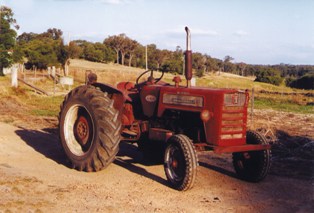
There are many small makes of tractor on the market to choose from, and it pays to monitor classified adds carefully, including dedicated farm machinery publications as this will give you an idea of what is available and what the average price is. It is usually best to stick to common makes and models as replacement parts will usually be cheaper and there will also be a greater supply of second hand spares available.
It can be false economy to purchase a cheaper tractor with higher hours on the clock as repair bills will quickly erode any savings. On the other hand, some high-hour tractors may have had an easy working life and can be in very good condition. Be very wary of any tractor with a fresh paint job. A tractor in a good tidy, original condition speaks volumes for its treatment during its working life.
Consider the condition of the tyres very carefully as it can easily cost $1000 or more to replaces worn or cracked rear tyres. Where possible an approved roll-over protection structure (ROPS) should be fitted to the tractor. It pays to check with state safety bodies regarding dealer obligations in this area. A two-post ROPS can be purchased for about $600 for most makes of tractor.
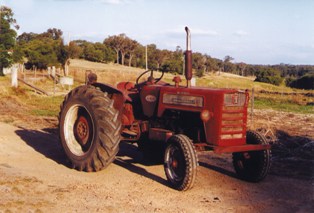
Figure 1: Buying a used tractor takes time and patience to avoid ending up with a lemon.
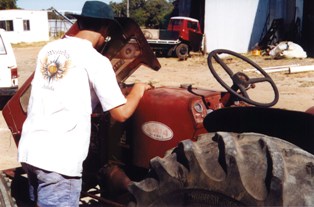
Figure 2: The first area of inspection is the engine. Have the seller start the tractor, making sure it hasn’t been ‘warmed up’ first. Diesel engines start far easier when warm, especially tired engines with poor injectors. Open the bonnet and examine the general condition of the engine.
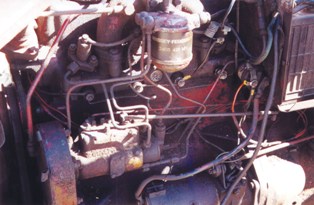
Figure 3: Most engines will have some coating of oil and dust. Excessive oil indicates leaks and possible excessive crankcase pressurisation from a worn engine. Bear in mind that the motor may have been degreased to hide possible leaks.

Figure 4: Run the engine up to speed and note the exhaust colour. Black smoke during acceleration is nothing to worry about, but during normal running this indicates inefficient combustion. This could be due to a clogged air filter or poor fuel atomisation from faulty injectors. Blue smoke indicates the engine is burning oil, which can be due to worn piston rings, cylinder liners and valve guides. Intermittent grey smoke from the exhaust indicates one or more cylinders are not firing properly. White smoke indicates coolant is leaking into the combustion chamber and vaporising. This can be due to a leaking head gasket or cracked head, or poorly sealed or holed cylinder liners.
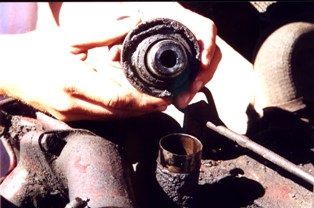
Figure 5: Check under the oil filler cap for white, greyish emulsified oil which can indicate coolant is entering the engine. Sometimes emulsion can result from excessive condensation from cold running. Perform a similar check with the radiator cap (only when the engine is cold) to see if there is oil in the coolant, a sign of a blown head gasket.
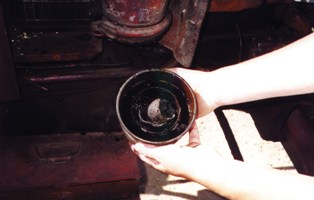
Figure 6: Remove the air filter to see whether it has been cleaned or replaced often. This is a good sign of how well the owner has maintained the tractor. It is wise to stay away from any machine that has a torn or poorly sealing air filter as dirt entering the engine can quickly wear it out. Older tractors such as the one pictured will have an oil bath air filter. If the oil is not replaced often then greasy lumps of dust build-up will form as shown.
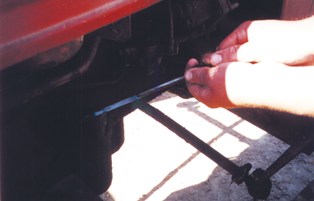
Figure 7: Inspect the oil on the dipstick for any signs of emulsion. Very black, thin oil will indicate it has not been changed for some time. If the oil on the dipstick is way above the full mark and quite thin then it may be contaminated with diesel. This can be caused by poor combustion, with fuel running down the cylinder walls into the sump. On some tractors the fuel lift pump or injection pump can leak diesel into the engine oil. Any thinning of the oil is disastrous for engine components.
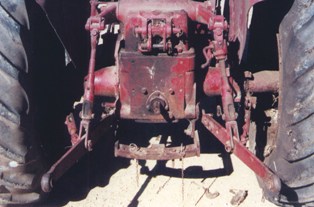
Figure 8: The next area to inspect is the three-point linkage. Poor linkage operation will greatly reduce the functionality of the tractor. If possible attach a heavy implement and raise the linkage. With the tractor engine turned off it should not sink, otherwise the seals in the lift ram are worn. Some older tractor linkages may sink overnight (very gradually), which should not present a problem. Inspect the power take-off shaft for leakage from the seal and sloppy bearings by grasping it and attempting to move it up and down.
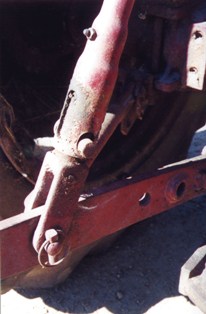
Figure 9: Grab the lower linkage arms and feel for vertical movement. There will usually be some free-play; if it is due to worn pins then it is relatively cheap to repair as after-market replacement parts are readily available. If it is due to worn holes (right) it is much more difficult to repair and the parts will require either machining work or replacement. The stabiliser arms on the side usually become quite worn on older machines but are easily replaced with non-genuine parts.
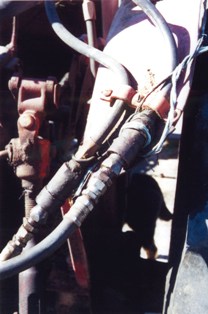
Figure 10: Any remote hydraulics fitted should show little signs of leaked oil at the fittings and couplings. Oil for the hydraulic system is drawn from the gearbox and if it leaks badly there is a fair chance the gearbox has been starved of oil at some stage.
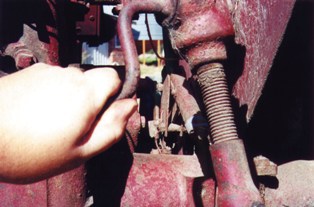
Figure 11: Check to see if the linkage arm adjuster works properly. Often they rust up and require a great deal of work to free them. They also suffer wear and are difficult to replace on older tractors.
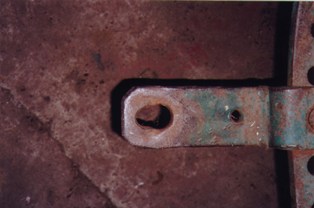
Figure 12: Inspect the drawbar hole for excessive wear such as the one pictured. Just like worn linkage components, this is a sure sign the tractor has done a lot of hard work. Often the drawbar will not be fitted as it can foul some three-point linkage equipment, so enquire if it is available with the tractor.
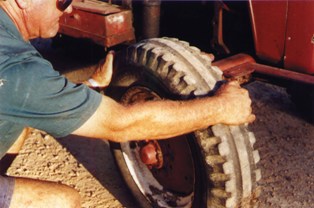
Figure 13: Move to the front wheels and try to wobble them in and out at the top of the tyre. This will indicate whether wheel bearings or king pins are worn. Rotate the steering wheel to check how much play (free travel) there is before the front wheels start to turn. If the wear is in the steering box it can be expensive to fix.
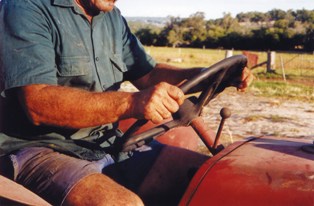
Figure 13: Move to the front wheels and try to wobble them in and out at the top of the tyre. This will indicate whether wheel bearings or king pins are worn. Rotate the steering wheel to check how much play (free travel) there is before the front wheels start to turn. If the wear is in the steering box it can be expensive to fix.
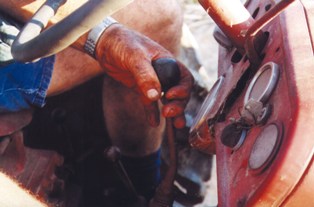
Figure 15: Next, take the tractor for a test drive, using all gears and high and low ratios to check for grumbling sounds from the gearbox. It pays to operate through the engine speed range while doing this, as some sounds will only become evident at certain speeds. Check that the clutch operates correctly by engaging a high gear and attempting to take off, when clutch slip will become obvious. If the clutch disengages when hardly any pressure is applied to the pedal, it is most likely worn out. Replacing a clutch is expensive as the whole tractor has to be split in half.
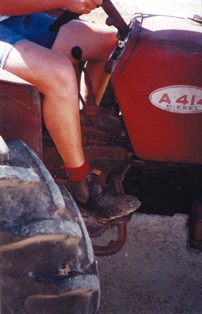
Figure 16: While driving, test the left and right turning brakes for operation. They should both work evenly and slew the tractor to one side when applied.



